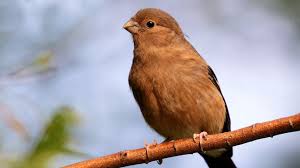Bullfinch: A Complete Guide to This Beautiful Songbird
The bullfinch is one of the most striking and charming birds found across the UK and Europe. Known for its vibrant red chest, gentle song, and delicate behavior, this small passerine has captivated birdwatchers and wildlife enthusiasts alike. From its diet and habitat preferences to its unique nesting habits and conservation needs, understanding the bullfinch provides an insight into one of Europe’s most beloved songbirds.
Whether you are a beginner birdwatcher or an experienced naturalist, this guide will help you identify, observe, and even attract bullfinches in your garden or local woodland.
What is a Bullfinch?
The bullfinch, scientifically known as Pyrrhula pyrrhula, is a small finch species commonly found throughout Europe and parts of Asia. Its name is derived from its stocky build and strong, conical beak, perfectly adapted for cracking seeds. Often seen at the edges of woodlands, hedgerows, and gardens, the bullfinch is a quiet and somewhat elusive bird.
Bullfinches are also sometimes referred to as Eurasian bullfinches due to their wide geographic distribution. They are part of the finch family, which includes chaffinches, goldfinches, and greenfinches.
Bullfinch Identification Guide
Recognizing a bullfinch in the wild requires attention to a few key characteristics:
Appearance
- Size and Shape: Bullfinches are compact birds, roughly 15–17 cm long, with a rounded body and short neck.
- Beak: Their thick, stubby beak is a defining feature, ideal for breaking seeds and buds.
- Colors: The male bullfinch is unmistakable, sporting a bright red chest and face, with a black cap and wings. The female is more muted, with grey-brown underparts and a subtle pinkish hue.
- Red Chest: The vibrant red chest of males makes them stand out, particularly during the breeding season.
- Tail and Wings: Both sexes have black wings and tail feathers, contrasting with their softer body tones.
This color differentiation makes it easy to distinguish males from females even at a distance.
Male vs Female Bullfinch
- Male Bullfinch: Bold red chest, black cap, dark wings, and a slightly more robust appearance.
- Female Bullfinch: Softer grey-brown underparts, light pink tint on the chest, black wings, and less vivid coloring overall.
Recognizing these differences is especially important for birdwatchers documenting bullfinch populations or monitoring local garden visitors.
Where Do Bullfinches Live?
Bullfinches have a preference for areas that provide both shelter and food:
- Habitats: They are commonly found in woodlands, forest edges, hedgerows, orchards, and gardens.
- Distribution in the UK: Bullfinches are widespread across England, Scotland, and Wales, with some populations extending into Northern Ireland.
- European Range: Beyond the UK, they are found throughout much of northern and central Europe, favoring temperate climates.
Bullfinches are adaptable but shy, often remaining hidden in dense shrubs or trees. Gardens that provide a mix of seeds, fruit-bearing plants, and hedges are ideal for attracting them.
Bullfinch Behavior
Observing bullfinch behavior can be a rewarding experience:
- Social Patterns: Outside the breeding season, bullfinches often form small flocks. They sometimes mix with other finch species, particularly in winter.
- Vocalizations: Their songs are soft, melodic whistles, and their calls are short “peep” sounds used for communication within the flock.
- Feeding Habits: Primarily seed eaters, they also feed on buds, berries, and occasionally insects, especially during breeding.
Understanding these behavioral patterns helps birdwatchers locate bullfinches more effectively and predict their movements across different seasons.
Bullfinch Diet and Feeding Habits
Understanding what bullfinches eat is crucial for both birdwatchers and gardeners aiming to attract them.
- Seeds and Nuts: Their strong, stubby beaks are perfect for cracking seeds. Sunflower seeds, linseed, and millet are ideal.
- Buds and Shoots: Particularly in spring, bullfinches feed on the buds of fruit trees and shrubs, which provides essential nutrients.
- Fruits and Berries: Soft fruits like cherries, hawthorn berries, and elderberries are a natural part of their diet during summer and autumn.
- Insects: While primarily seed-eaters, they occasionally consume small insects, especially during the breeding season, to feed their young.
Providing appropriate bullfinch feeders with high-quality seeds and nuts can encourage regular visits. Avoid feeding bread or processed food, which can harm their health.
Nesting and Reproduction
Bullfinches exhibit fascinating mating habits and nesting behavior:
- Nesting Sites: They prefer dense shrubs, low trees, and hedgerows to conceal their nests from predators.
- Nest Construction: The female builds a cup-shaped nest using twigs, moss, and grasses, lined with soft plant fibers.
- Eggs and Incubation: Typically, 4–5 eggs are laid, pale blue or greenish with reddish speckles. The female incubates them for about 12–14 days.
- Fledgling Care: Both parents feed the chicks once hatched. Fledglings leave the nest after 14–18 days but often remain nearby while learning to forage.
Nesting usually occurs from April to July, coinciding with abundant food resources. Gardeners can support nesting bullfinches by maintaining thick shrubbery and avoiding pruning during this period.
Bullfinch Lifecycle
Understanding the bullfinch life cycle helps in predicting behavior and planning birdwatching activities:
- Juvenile Stage: Newly fledged bullfinches have duller plumage than adults. Male juveniles gradually develop their red chest over the first year.
- Adult Stage: Fully grown bullfinches have distinct sexual dimorphism—bright red chest in males, brown-grey in females.
- Longevity: In the wild, bullfinches can live up to 5–6 years, although survival depends on food availability and predation.
Seasonal changes influence their activity, diet, and movement patterns. Recognizing these stages makes spotting and identifying bullfinches easier.
Behavior and Social Structure
Bullfinches are generally shy but fascinating to observe:
- Territoriality: During breeding season, males are protective of territory and may chase intruders.
- Flocking: In autumn and winter, they often join small flocks, sometimes with other finch species, to forage and stay safe.
- Vocalizations: Bullfinch songs are soft whistles, often melodic and understated compared to other songbirds. Their calls are short “peep” sounds used to communicate within flocks.
- Foraging: They feed quietly in low shrubs or near the ground, often moving in pairs or family groups.
Behavioral patterns can be observed in gardens, parks, and woodland edges, providing insight into their ecological needs.
Migration Patterns
While most bullfinches in the UK are resident birds, some populations in northern Europe display short-distance migration:
- Partial Migration: Birds from colder regions move south during winter for milder climates and better food availability.
- Seasonal Distribution: Winter sees increased sightings in gardens with feeders, while breeding season concentrates birds in woodland and hedgerow habitats.
- Observation Tips: Birdwatchers can note migration patterns by recording flock movements and seasonal numbers, which also assists conservation efforts.
Spotting Bullfinches in the UK and Europe
Knowing where to find bullfinches enhances birdwatching experiences:
- Woodland Edges and Hedges: These areas provide natural food sources and nesting sites.
- Gardens with Feeders: Especially those with sunflower seeds, nuts, and berries.
- Winter Observations: Flocks often gather near reliable feeding stations.
- Identifying by Appearance and Song: Male bullfinches are easy to spot due to their red chest, while females blend more into the environment. Listening for soft whistles can help locate them in dense foliage.
Tips for Birdwatchers:
- Use binoculars to avoid disturbing the birds.
- Keep observation logs for seasonal patterns and behaviors.
- Photograph from a distance to capture natural behavior without stress.
Bullfinch Conservation
Bullfinch populations have declined in some areas due to habitat loss, changes in farming practices, and predation:
- Habitat Protection: Maintaining hedgerows, woodland edges, and native shrubbery helps support breeding and feeding.
- Public Awareness: Organizations like the RSPB and Woodland Trust provide resources on protecting bullfinches.
- Garden Support: Supplementary feeding and nesting-friendly environments can aid local populations, especially during winter.
- Population Monitoring: Tracking breeding success and population numbers informs conservation strategies.
By contributing to conservation efforts, birdwatchers and gardeners help maintain bullfinch numbers and biodiversity.







